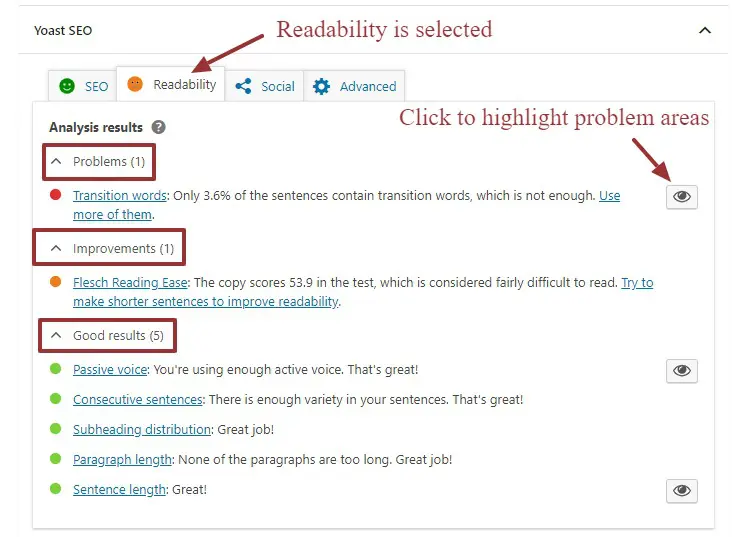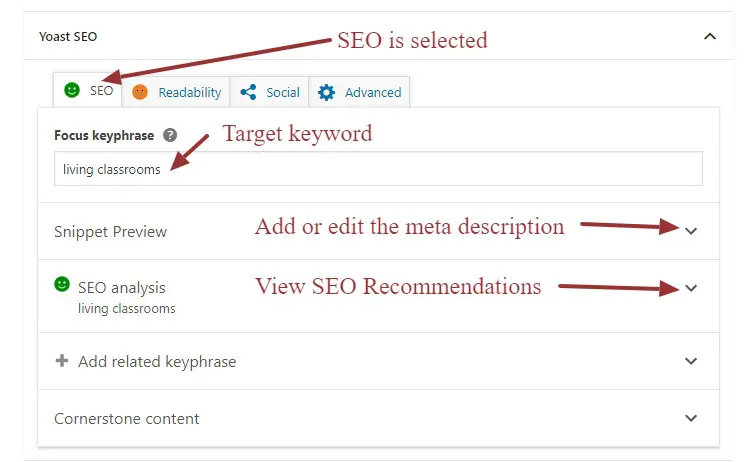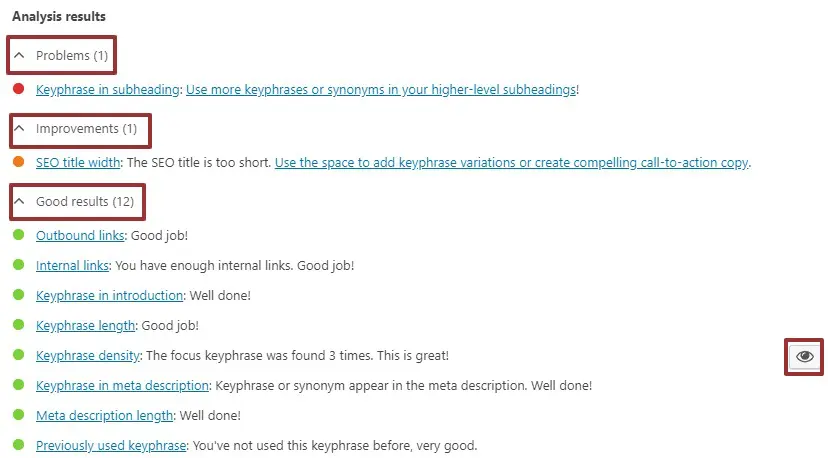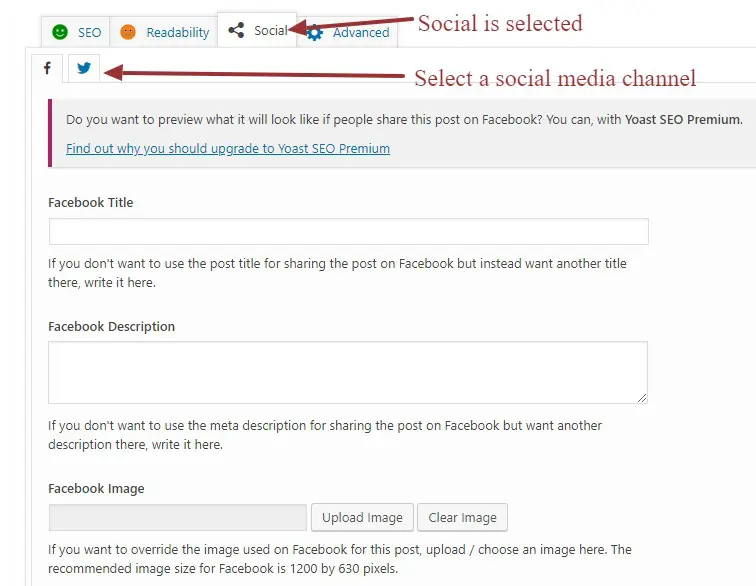Is your nonprofit’s website showing up in related searches about your organization and mission? Optimizing website content for search can increase your odds of appearing in the results pages of those searches you care most about. Search engine optimization (SEO) has the potential to increase traffic to your site from those already interested in or curious about your cause.
The only caveat? SEO is hard. But, there are tools that make it a heck of a lot easier. Approachable, even! The Yoast SEO plugin is a great tool for optimization newbies (and oldies) to make sure their content has the best chance of ranking for a chosen keyword within search engine results.
Add the Yoast SEO Plugin to Your Website
Have a WordPress website? Great! Download the plugin and add it to your site. You can then update the settings to match your preferences and website.
Be careful which version you select through this process. There is a paid version of the plugin that includes some additional features and support, but the most important features come along with the free version — the version I’ll talk about through the rest of this post.
If your website is on the Wired Impact platform, Yoast SEO should sound pretty familiar. We’ve already set it up with our recommended settings on your website!
Use It to Optimize Your Content
Once your content is written with your human visitors (and a specific keyword) in mind, add your target keyword to the Yoast SEO section below the content editor to get optimizing.

The Yoast SEO plugin includes two sets of recommendations for each page or post: Readability and SEO Analysis. Under each heading, suggestions will be broken out under “Problems” indicating items that must be fixed, “Improvements” indicating items that should be fixed, and “Good results” indicating the things you’re doing well in the content. Click the eye icon beside each recommendation to highlight it within the content.
Readability
Check your readability notes first. While the Yoast SEO suggestions won’t be perfect, they’re a good indication of adjustments you can consider to make the content easier to read, especially for online users with short attention spans.
You’ll see notes on the following items:
- Transition words: Use transition words help your writing flow from one thought to the next.
- Consecutive sentences: Try not to begin with the same word for multiple sentences in a row.
- Flesch reading ease: Yoast runs this test on your content to determine how easy it is to understand overall. It’s anchored in the length of the sentences and words. You’ll see a grade of 1-100 with lower scores being more difficult to read.
- Paragraph length: For online content, keep paragraphs short.
- Sentence length: Keep your sentences short, too. Long sentences are those over 20 words.
- Passive voice: Most of your sentences should use active voice for clarity.
- Subheading distribution: Breaking up your content with subheadings makes it easier for your readers to scan.

SEO Analysis
Then, take a look at the SEO Analysis section for optimization tips.

It will include recommendations on the following items, according to SEO best practices:
- Internal links: Try to link to other pages within your website from the content.
- Image alt attributes — Include images within your content and use your focus keyword within the alt text for an image.
- Text length: Try to use at least 300 words on each page.
- SEO title width: The SEO title appears in search results and typically includes the page name and your organization name. You can edit this by clicking “Edit Snippet” (within the same section as the meta description).
- Outbound links: Try to link to resources outside of your website within your content.
- Keyphrase in introduction: Use your keyword in the first paragraph of your content.
- Keyphrase length: Generally, the longer your keyword, the fewer competitors you’ll have within search engine results.
- Keyphrase density: Try to use your keyword phrase at least three times within the content. Yoast SEO may ask you to use it more if you have a longer page.
- Keyphrase in meta description: Make sure that you’ve included a meta description and used your keyword within that meta description.
- Meta description length: According to Yoast SEO, the ideal length for meta descriptions is 120-156 characters.
- Previously used keyphrase: Only target each keyword on one page. If you use the same focus keyword on multiple pages on your website, you’ll be competing with yourself in the search engine results.
- Keyphrase in subheading: Try to use your keyword within a heading in your content.
- Keyphrase in title: Use your focus keyword within the page title (page name) as well as within the URL.

Update Social Media Posts
In the social tab, you can choose to use a different title, image or description when the post is linked within social media posts on your connected social media platforms, like Facebook or Twitter. While this may not have a direct correlation with search engines, putting your organization’s best foot forward on social can certainly lead to additional traffic. Without updating this content, your standard page title, meta description and featured image for the page will be pulled into each linked social media post.

That doesn’t sound too hard, right? Once you add your content, the Yoast SEO plugin highlights areas for you to revisit and update as you see fit. It may well be that you decide that your audience can handle a few additional long sentences or that the integrity of the page content might be damaged by squeezing in another use of your focus keyword. But, it never hurts to review the opportunities for improvement. Especially when they’re color coded and highlighted for you!
Do you use the Yoast SEO plugin to optimize your website content for search engines? Has it helped you keep optimization best practices top of mind? Let’s talk in the comments.

Comments